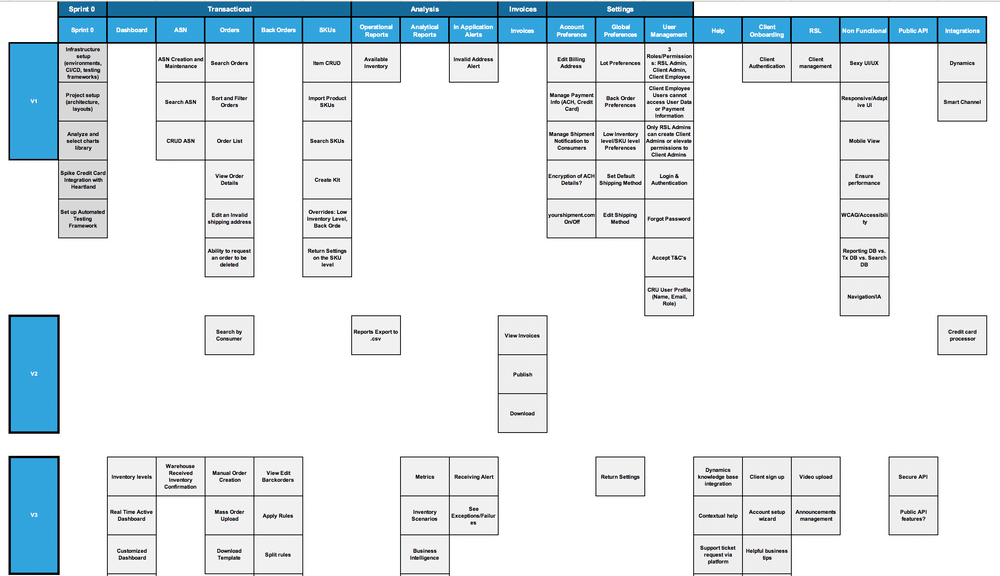Assemble artifacts and next steps
Signs of a successful workshop are having a clearly defined solution, alignment on scope and priorities, and a level of shared understanding not possible in traditional requirement methods. This shared understanding is a crucial step to ensure that the right product is built the right way.
To date, a wealth of information has been captured around the problem space and the solution. A critical next step is to aggregate all that content: digitize the story map, estimate the work, and start assembling the proposal.
Digitizing the story map
Devbridge teams have developed some best practices for digitizing the story map over time. Consider the following:
- Digitize the story map soon after the workshop concludes.
- Use a collaborative tool to capture the story map contents (even if it is as simple as a shared Excel document on OneDrive).
- Brand the final story map output in line with the other assets (e.g., using Draw.io or Smartdraw).
- Transition the story map to Jira stories, rekeying stories from a large workshop may become a burden. The story map should start evolving into a backlog, with definition of highest-priority features reaching necessary level of granularity.

Sharing information and files
Create dedicated areas for shared communication and files.
- Establish a new shared space to exchange notes (in Confluence) for the account as well as individual product-specific pages. Note detailed instructions in this tool.
- Provide a dedicated shared drive for files (in OneDrive). Invite the entire team, including the client to the folder. Use the default project folder structure and naming conventions; upload all files and assets.